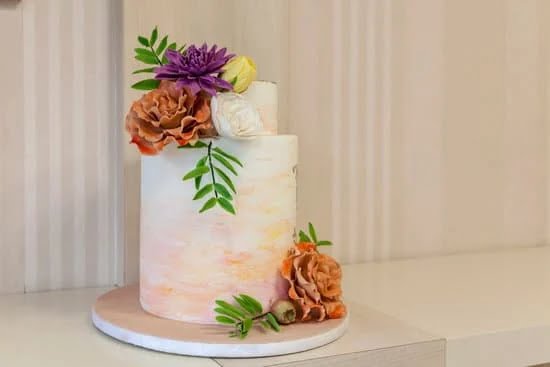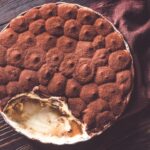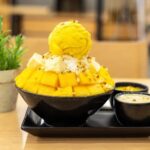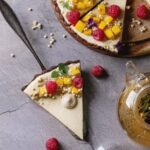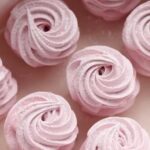Are you ready to elevate your cake decorating game? One of the key elements in creating beautifully decorated cakes is the frosting.
Whether you’re a beginner or a seasoned baker, knowing how to make cake decorating frosting is an essential skill. In this article, we will explore the different types of frosting, essential ingredients for making frosting, step-by-step instructions on how to make buttercream frosting, tips and tricks for achieving the perfect consistency and texture, creative decorating ideas using frosting, and how to store and preserve leftover frosting.
When it comes to cake decorating, the right type of frosting can make all the difference. From buttercream to fondant, royal icing to cream cheese frosting, each type has its own unique properties and uses. Understanding these differences is crucial in achieving the desired look and taste for your cakes.
In addition to understanding the different types of frosting, knowing the essential ingredients for making cake decorating frosting is equally important. From powdered sugar to butter, vanilla extract to food coloring, each ingredient plays a crucial role in determining the flavor and texture of your frosting.
Once you have mastered the basics of ingredients, you can then move on to learning step-by-step instructions on how to make buttercream frosting – one of the most versatile and popular choices for cake decorating.
Understanding the Different Types of Frosting
When it comes to cake decorating, choosing the right type of frosting is essential in achieving the desired look and taste for your cake. Each type of frosting has its own unique characteristics and uses, making it important to understand the differences between them.
1. Buttercream Frosting: Buttercream is a classic frosting that is known for its creamy texture and sweet flavor. It is made with butter, powdered sugar, and flavorings such as vanilla extract. This type of frosting is versatile and can be easily colored and flavored to fit any theme or occasion.
2. Fondant: Fondant is a smooth, pliable icing that can be rolled out and draped over a cake for a clean and polished look. It is often used for creating intricate decorations and designs on cakes, making it popular for special occasions such as weddings or birthdays.
3. Royal Icing: Royal icing dries to a hard, candy-like finish, making it perfect for intricate piping work and creating detailed designs on cakes and cookies. It is made with powdered sugar, egg whites, and flavorings such as lemon juice or extract.
4. Cream Cheese Frosting: Cream cheese frosting has a tangy flavor that pairs well with carrot cakes or red velvet cakes. It is made with cream cheese, butter, powdered sugar, and vanilla extract.
By understanding the different types of frosting available, you can choose the best option for your specific decorating needs. Each type of frosting offers its own benefits in terms of taste, texture, and decorative potential. Whether you’re looking for a smooth finish with fondant or intricate piping details with royal icing, there’s a perfect frosting option for every cake decorating project.
Essential Ingredients for Making Cake Decorating Frosting
When it comes to making cake decorating frosting, having the right ingredients is crucial to achieving the perfect taste and texture. Whether you’re making buttercream, fondant, royal icing, or cream cheese frosting, each type requires different essential ingredients. Here are the key components you’ll need for making your own delicious and versatile cake decorating frostings.
Buttercream Frosting
Buttercream frosting is a classic choice for cake decorating, and it only requires a few simple ingredients. You’ll need unsalted butter, powdered sugar, vanilla extract, and a pinch of salt. Some recipes also call for heavy cream or milk to achieve the desired consistency. For chocolate buttercream frosting, you can add cocoa powder or melted chocolate to the mixture.
Fondant
Fondant is a popular choice for creating smooth and elegant cake decorations. The essential ingredients for making fondant include marshmallows, water, powdered sugar, and vegetable shortening. You can also add flavorings or food coloring to customize the taste and appearance of the fondant.
Royal Icing
Royal icing is commonly used for intricate piping work and creating edible decorations. The main ingredients for royal icing are egg whites or meringue powder, powdered sugar, and cream of tartar. This type of frosting sets hard when dried, making it ideal for detailed designs on cakes and cookies.
Cream Cheese Frosting
Cream cheese frosting is loved for its creamy texture and slightly tangy flavor. To make this delicious frosting, you’ll need cream cheese, butter, powdered sugar, and vanilla extract. This type of frosting is perfect for pairing with carrot cake or red velvet cake.
By understanding the essential ingredients for making different types of cake decorating frostings, you can confidently experiment with various flavors and textures to create stunning desserts that will delight your friends and family.
Step-by-Step Instructions on How to Make Buttercream Frosting
Buttercream frosting is a classic choice for cake decorating, known for its rich and creamy texture. Making your own buttercream frosting at home is surprisingly simple and rewarding. Here’s a step-by-step guide on how to make buttercream frosting that’s perfect for decorating your cakes.
Gather Your Ingredients
To make buttercream frosting, you’ll need unsalted butter, powdered sugar, vanilla extract, and heavy cream. The butter should be softened but not melted, and it’s important to sift the powdered sugar to avoid lumps in the frosting. You can also add food coloring to achieve your desired shade.
Cream the Butter
Start by beating the softened butter with an electric mixer until it becomes light and fluffy. This step is crucial for achieving a smooth and creamy texture in your frosting. It may take several minutes, but be patient – the end result will be worth it.
Add the Remaining Ingredients
Once the butter is creamed, gradually add the sifted powdered sugar while continuing to mix on low speed. Then, add the vanilla extract and heavy cream, adjusting the amounts of each as needed to reach your desired consistency. Keep mixing until all ingredients are fully incorporated and the frosting is smooth.
Making your own buttercream frosting gives you full control over the flavor and texture of your cake decorations. Experiment with different flavors and colors to create stunning designs that will impress everyone at your next celebration.
Tips and Tricks for Achieving the Perfect Consistency and Texture
Achieving the perfect consistency and texture for your cake decorating frosting is essential for creating beautifully decorated cakes. Whether you’re making buttercream, fondant, royal icing, or cream cheese frosting, it’s important to know the tips and tricks to get the right texture. Here are some helpful tips to consider:
- Use room temperature ingredients: When making frosting, using room temperature butter, cream cheese, or any other dairy ingredients will help achieve a smoother and creamier consistency.
- Gradually add liquid: When mixing your ingredients, gradually add in any liquids such as milk or heavy cream. This will allow you to control the consistency and prevent the frosting from becoming too thin.
- Sift powdered sugar: If your recipe calls for powdered sugar, be sure to sift it before adding it to your frosting mixture. This will help prevent lumps and create a smoother texture.
Additionally, depending on the type of frosting you’re making, knowing when to mix and whip the ingredients is crucial. For example, when making buttercream frosting, overmixing can result in a greasy texture, while undermixing can lead to a grainy consistency. Understanding how different ingredients react with each other will also help you achieve the desired texture.
Practice and patience are key when it comes to perfecting the texture of your cake decorating frosting. It may take several attempts before you achieve the ideal consistency for your specific decorating needs. Remember that practice makes perfect and don’t be afraid to experiment with different techniques until you find what works best for you and your creations.
Creative Decorating Ideas Using Frosting, Including Piping Techniques and Fondant Decorations
When it comes to cake decorating, frosting is the ultimate tool for turning a simple cake into a masterpiece. Piping techniques are a great way to add intricate and beautiful designs to your cakes and cupcakes. The most common piping techniques include shell borders, rosettes, stars, and leaves. These designs can be achieved using a variety of piping tips and nozzles, each creating different effects.
Another popular method for cake decoration is fondant decorations. Fondant is a versatile type of frosting that can be shaped and molded into various designs such as flowers, ribbons, and even 3D figures. It provides a smooth and clean canvas for creativity and allows for endless possibilities when it comes to cake decoration.
In addition to piping techniques and fondant decorations, there are other creative ideas for using frosting in cake decorating. Ombre frosting, marbling techniques, and using edible glitter or paint are just some of the many ways you can elevate your cake decorating skills.
| Piping Tips | Fondant Decorations |
|---|---|
| Shell Borders | Flowers |
| Rosettes | Ribbons |
| Stars | 3D Figures |
How to Store and Preserve Leftover Frosting
When it comes to cake decorating, having leftover frosting is a common occurrence. Whether you’ve made too much for your cake or cupcakes, it’s important to know how to store and preserve your frosting properly to ensure that it stays fresh for future use. There are a few different methods for storing leftover frosting, depending on the type of frosting you have made.
For buttercream and cream cheese frostings, you can store any leftovers in an airtight container in the refrigerator for up to two weeks. This will keep the frosting fresh and ready for your next baking project. Simply take it out of the fridge and let it come to room temperature before using it again.
If you have leftover fondant or royal icing, these can be stored at room temperature in an airtight container for several weeks. Just make sure to keep them away from direct sunlight and heat sources to prevent them from melting or becoming too soft.
It’s always a good idea to label your containers with the date that the frosting was made so that you can keep track of how long it has been stored. This will help ensure that you are using fresh frosting for your cakes and other baked goods.
| Frosting Type | Storage Method |
|---|---|
| Buttercream and Cream Cheese | Refrigerator in an airtight container for up to two weeks |
| Fondant and Royal Icing | Room temperature in an airtight container for several weeks |
Conclusion
In conclusion, mastering the art of cake decorating frosting opens up a world of creative possibilities for adding flair and personal touch to your baked creations. Whether you prefer the classic buttercream, the smooth and versatile fondant, the firm and glossy royal icing, or the tangy cream cheese frosting, understanding the different types of frosting is essential for achieving the best results.
When it comes to making cake decorating frosting, using quality ingredients is key to achieving the perfect consistency and flavor. From butter, confectioners’ sugar, and vanilla extract for buttercream frosting to gelatin, glycerin, and glucose syrup for fondant, each type of frosting requires specific ingredients that contribute to its unique texture and taste.
Lastly, don’t forget that practicing different piping techniques and experimenting with fondant decorations can take your cake decorating skills to the next level. Whether you’re creating intricate designs or simply adding a personal touch with colorful swirls and shapes, there’s no limit to what you can achieve with cake decorating frosting. So go ahead and let your creativity flow as you master how to make cake decorating frosting.
Frequently Asked Questions
What Kind of Frosting Do You Use for Cake Decorating?
For cake decorating, a popular choice of frosting is buttercream. It is versatile and can be easily colored and piped for intricate designs. Its creamy texture makes it ideal for spreading and creating various decorations.
What Frosting Do Professionals Use for Cakes?
Professionals often use Swiss meringue buttercream for cakes due to its light and silky texture. This type of frosting is known for its stability, making it easier to work with when creating elaborate designs. Its smooth finish also adds a professional touch to cakes.
How Do You Make Frosting Better for Decorating?
To make frosting better for decorating, you can start by ensuring the consistency is just right – not too thick or thin. Adding powdered sugar gradually while mixing can help achieve the perfect texture.
Also, using gel food coloring instead of liquid can prevent the frosting from becoming too watery when tinting it. Another tip is to chill the frosting slightly before decorating to make it firmer and more manageable for piping or spreading intricate designs on the cake.

Welcome to our cake decorating blog! My name is Destiny Flores, and I am the proud owner of a cake decorating business named Cake Karma. Our mission is to provide delicious, beautiful cakes for all occasions. We specialize in creating custom cakes that are tailored specifically to each customer’s individual needs and tastes.

